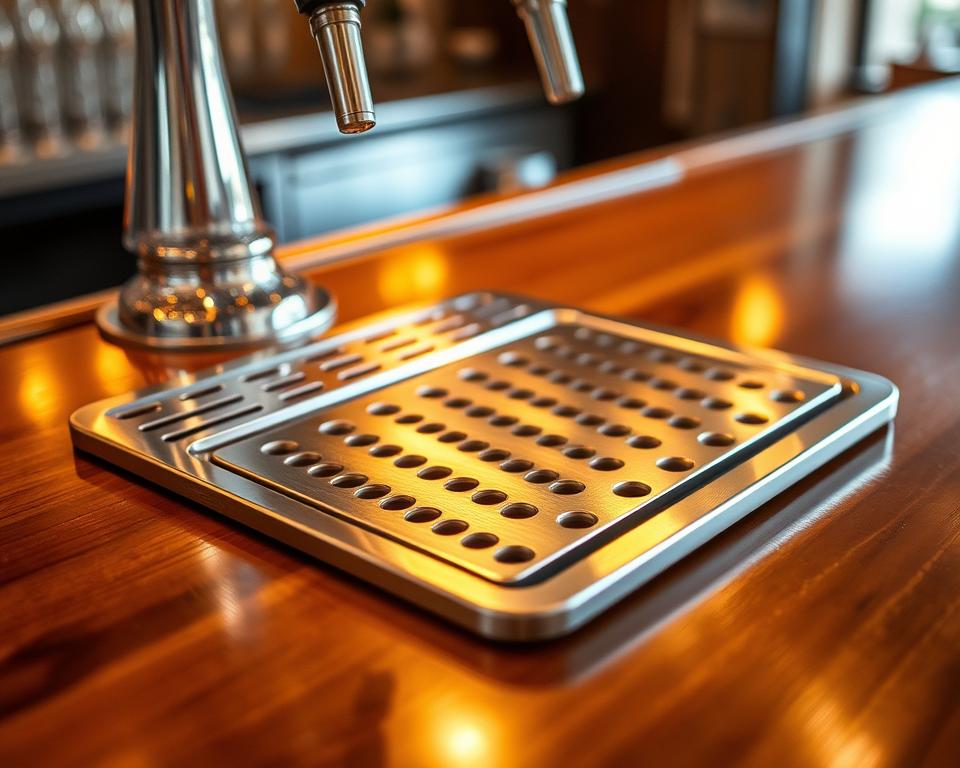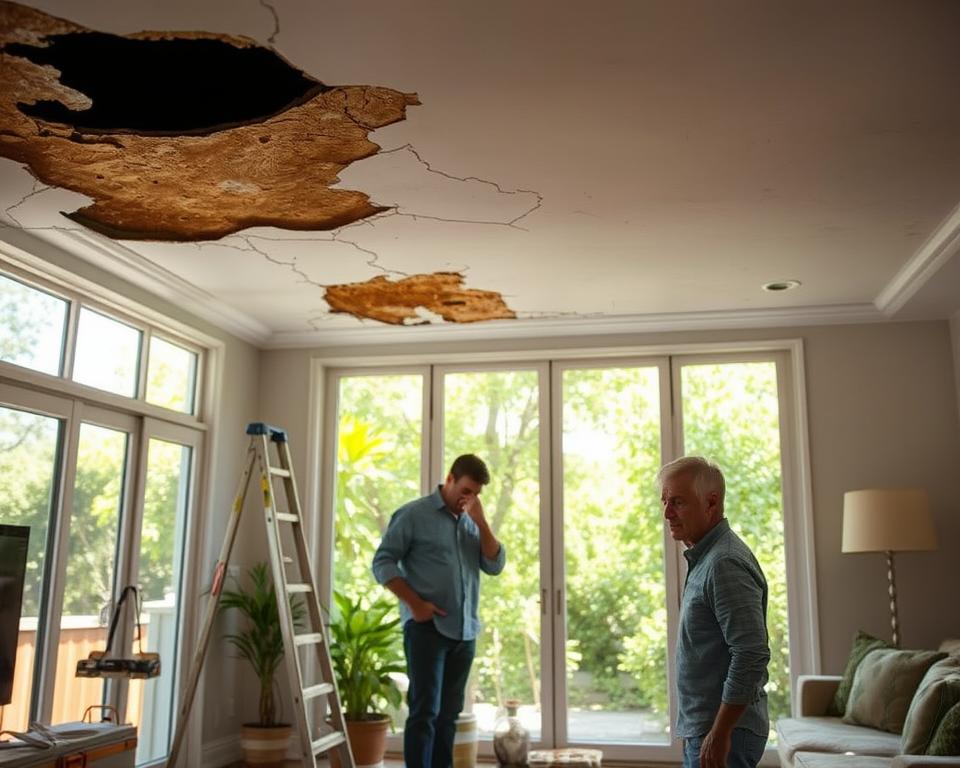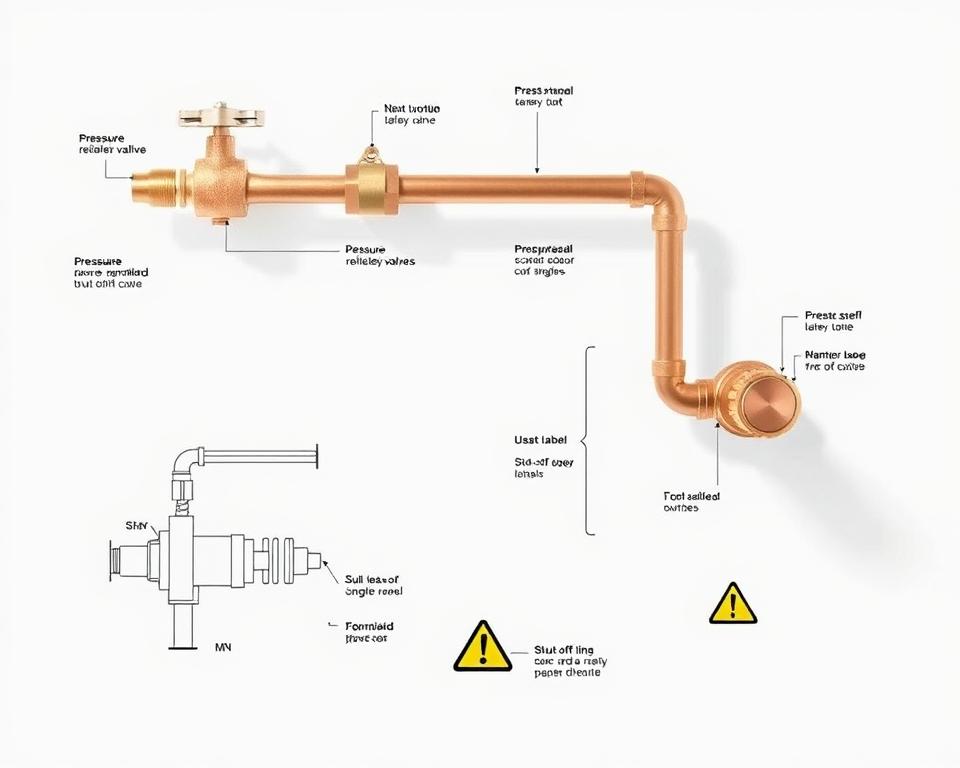Leading Search Engine Optimization Firm Mesa – Elevate Your Search Positions
An estimated 93% of web interactions commence with an online search tool. For Mesa businesses, utilizing Search Engine Optimization can transform the landscape. It can convert obscurity into prominence in the digital world. Partnering with an Mesa SEO specialist can greatly boost your search rankings and online presence.
Thrive Internet Marketing Agency distinguishes itself among top Mesa SEO firms. It carries a flawless five-star rating on Clutch and UpCity, due to favorable customer reviews and a dominant market position. Boasting 10+ years of proficiency, Thrive has enabled companies to produce over $6 billion in revenue. This highlights their proficiency in generating real-world results through tailored SEO strategies with internet marketing Mesa
Thrive delivers a comprehensive array of solutions, including search term analysis, link building, and regional search optimization. These offerings aim to enable local enterprises to thrive. They have over 300 million annual visits to client websites and produce over 35,000 content pieces annually. Their methodology emphasizes measurable outcomes and clear reporting. They’ve seen clients experience a +664% increase in organic traffic and a +360% boost in online leads. Collaborating with Thrive in Mesa’s fierce market may be your key to achievement.
Grasping Why SEO Matters in Mesa
The digital ecosystem in Mesa is extremely competitive, driving local companies to employ smart methods to distinguish themselves. SEO is key to boosting online visibility, rendering it essential for enterprises striving for online success. With an increasing demand for robust online visibility, numerous companies consult Mesa SEO experts for optimization solutions.
The Digital Landscape in Mesa
Mesa is rapidly becoming a leading tech hub in the U.S., accommodating innovative startups alongside established corporations. This expansion has attracted numerous Mesa SEO specialists who concentrate on regional keyword analysis and tailored content optimization. They also enhance local citations, helping businesses in Mesa. SEO professionals utilize cutting-edge analytic tools to oversee measures including organic visits and conversion percentages.
The Critical Role of SEO for Local Companies
For local businesses, effective SEO is vital for reaching and engaging their target market. SEO strategies focus on local techniques, including mobile-first design and technical optimizations. They enhance site efficiency and the overall user journey. Using location-based keywords in content and metadata helps businesses show up in local search results, boosting traffic and engagement.
Given that more than 60% of queries are mobile-based, mobile optimization is crucial for achieving success in Mesa.
Local SEO professionals in Mesa advocate for ethical SEO methods to guarantee enduring success and adherence to search engine standards. Verifying profiles on Google My Business along with other directories enhances visibility and lures potential customers. Concentrating on generating high-quality leads and building brand recognition, local companies can leverage SEO to achieve substantial expansion and digital prominence.
Key Considerations for Selecting an SEO Firm
Selecting an SEO firm requires evaluating multiple essential aspects. They need to find a reputable firm that fits their specific needs. Key determinants of effective SEO include proven experience, comprehensive services, and specialized industry knowledge. Collaborating with premier Mesa SEO agencies delivers improved performance, setting businesses apart from the competition.
Established Experience and Performance Record
Experience in SEO greatly impacts the quality of service an agency offers. Choosing a cost-effective SEO firm in Mesa with proven success provides confidence. For instance, Loopex Digital holds a five-star score on Clutch, bolstered by stellar client reviews and excellent retention metrics. Firms such as Cardinal Digital Marketing excel with extensive experience in industries including healthcare. They provide customized solutions designed for distinct sector demands.
Services Offered by SEO Agencies
Selecting a firm with comprehensive service offerings is essential. Leading Mesa SEO firms deliver service bundles including technical optimization, content creation, and social media strategy. Newman Web Solutions and 2POINT focus on local SEO, helping clients reach their target audience in Mesa. They additionally craft customized content and formulate local strategies, demonstrating their dedication to performance optimization.
Top SEO Agency Mesa: An Overview
Choosing the right Mesa SEO company requires understanding the diverse services and pricing models. Multiple firms address distinct market requirements by concentrating on specific niches. Such offerings improve digital presence and search exposure. A comprehensive snapshot of these aspects supports informed decision-making tailored to specific business demands.
Areas of Expertise and Focus
Local SEO agencies in Mesa stand out in specialties designed for diverse markets. As an example, Marketing1on1 prioritizes local search optimization and technical refinements for better ranking performance. Other notable players like SEO Guru Mesa, Coalition Technologies, and Black Bear Design extend their services beyond SEO to include web design and PPC management. Their specialties range from healthcare to e-commerce, showing a broad spectrum of expertise available within the city.
The focus on local SEO is significant, with around 72% of SEO firms working with local businesses. The integration of social media marketing by 64% of these agencies further enhances their ability to drive local traffic and visibility. Thus, investing in professional Mesa SEO services becomes essential for local firms.
Cost Structures and Budget Considerations
There are more than 36 SEO agencies in Mesa, each presenting a spectrum of cost models tailored to different financial plans. Approximately 69% of these agencies provide web design services, which may add value but can also impact pricing structures. It’s essential for businesses to understand that the cost of SEO services can vary based on service complexity and agency reputation. Starter packages tend to be budget-friendly, whereas comprehensive plans featuring PPC and social media management are considerably more expensive.

| Firm Name | Core Services | Niche | Common Cost Structure |
|---|---|---|---|
| Marketing1on1 | Local search optimization, technical refinements | Health and e-commerce | Subscription Model |
| SEO Guru Mesa | SEO, Paid Search, Social Media Marketing | Local Traffic Optimization | Time-Based Pricing |
| Coalition Technologies | Search Term Analysis, Content Development | Regional Optimization | Per-Project Pricing |
| Black Bear Design | SEO, Site Development | Business Visibility | Flat Fee |
Essential Characteristics of Top SEO Firms
A top-performing SEO agency excels with a distinctive strategy. It adapts its approach to the particular requirements of diverse industries. Thus, businesses get tailored, high-impact strategies. Partnering with an experienced Mesa SEO consultant ensures optimized local search strategies.
Customized Strategies for Different Industries
Different industries have distinct hurdles and prospects. An outstanding firm adapts its tactics to align with various industry needs. For instance, they might use different strategies for B2B and B2C clients. Thus, they effectively satisfy the requirements of their audience.
By executing detailed keyword and competitor studies, firms uncover critical search terms. This significantly enhances campaign performance. They also stick to ethical SEO practices, following Google’s guidelines for long-term success.
Clear Communication and Reporting
Effective dialogue is essential for a fruitful SEO collaboration. Top agencies in Mesa are transparent about their processes and results. They deliver frequent reports, strategic data insights, and detailed analytics that foster trust and keep clients apprised.
They offer detailed reports on campaign performance and insights from data analysis. This facilitates timely modifications to tactics. A focus on improving user experience, like site speed and mobile responsiveness, supports clients’ goals for sustained growth and increased visibility.
Premier SEO Offerings in Mesa
Recognizing the leading SEO offerings in Mesa requires understanding the key components that drive effective optimization. Companies aiming to bolster their digital footprint can leverage specialized offerings like technical SEO and content creation. These services are key to ensuring websites not only become more visible but also perform optimally, engaging users deeply.
Website Structure and On-page Enhancements
Firms such as AdLift focus on technical optimization to perfect site architecture and performance. They conduct detailed audits and continuous optimizations to adhere to current standards. Prioritizing mobile optimization and site speed, they enhance user experience. Mesa SEO specialists’ proficiency substantially raises rankings, ensuring websites are accessible and high-performing.
Editorial Development and External Linking
Within search optimization, quality content is paramount, as acknowledged by The Scale Agency. Their content production services are designed to elevate engagement and optimize search performance. Alongside effective link building, these offerings ensure local SEO in Mesa is seamlessly woven into various marketing plans. Such a comprehensive method, prioritizing both excellent content and effective backlinking, increases visitor engagement and overall online prominence.
Why Local Search Optimization is Essential in Mesa
In the modern digital marketplace, local SEO is indispensable for Mesa enterprises intent on increasing their digital footprint. Local search optimization in Mesa is designed to improve search rankings while targeting nearby audiences. Employing localized keywords enables businesses to secure more qualified traffic and foster better customer engagement.
The Impact of Google My Business Optimization
Properly optimizing Google My Business can greatly elevate local search positions. Local SEO specialists in Mesa often recommend this practice to increase prominence on Google Maps and in search listings. For example, companies that optimize their profiles see increased local customer engagement, driving higher in-store visits and inquiries.
Case studies such as Argentine Asado achieving 15,000 clicks highlight the importance of profile optimization for local engagement.
Improving Local Rankings through SEO Techniques
Enhancing local rankings requires various SEO techniques, including online reviews and local directory listings. Positive reviews not only increase credibility but also significantly impact search rankings. Businesses benefit from appearing in Google’s Local Pack and Maps, increasing their chances of attracting nearby customers.
Companies like Ubiq Security saw a fivefold increase in lead generation through local SEO strategies. Local SEO professionals provide offerings such as detailed audits, targeted keyword research, and strategic content marketing. These strategies help grow domain authority, leading to faster content visibility and improved brand authority.
Evaluating Top SEO Firms in Mesa: Reviews and Ratings
Knowing how leading SEO agencies in Mesa perform is crucial for businesses in search of digital marketing support. Client testimonials and ratings offer insights into an agency’s reputation and effectiveness. Firms demonstrate their achievements via impressive case studies and positive client testimonials, emphasizing measurable outcomes.
Success Stories and Customer Feedback
Firms such as M16 Marketing distinguish themselves with customer-centric approaches and recognized excellence. Client feedback consistently underscores their skill in nurturing long-term collaborations and boosting online profiles.
Both UPQODE and Caffeine Marketing secure five-star ratings on Google, with customers lauding their superior service and precise focus. ClickGiant holds a 4.4-star rating, praised for quick responses and impactful strategies. With a legacy spanning 25 years, Straight North’s reviews reflect major improvements in online lead generation and overall business success.
Significance of External Ratings
Feedback from platforms such as Clutch enhances the reliability of top Mesa SEO agencies. For example, Mesa SEO Pro’s notable 4.8/5 rating is indicative of excellent customer approval. Similarly, FindLocal Company boasts a perfect average rating, attesting to the effectiveness of their bespoke SEO services.
Black Bear Design is recognized for their client-centric approach, focusing on a deep understanding of unique customer objectives. Positive reviews both affirm the agency’s excellence and build trust with potential customers. Testimonials act as a key resource in helping businesses identify dependable partners for their online marketing efforts.
Advanced SEO Solutions Available in Mesa
Amidst fierce competition, professional SEO solutions are essential for Mesa businesses seeking greater online visibility. A comprehensive strategy encompasses website optimization as well as innovative, industry-specific tactics. This holds especially for e-commerce ventures and multi-location franchises.
Advanced Strategies for E-commerce SEO
The growth of online shopping has heightened the demand for effective e-commerce SEO strategies. Enterprises aiming to excel in e-commerce must concentrate on optimizing user experience and technical performance. Agencies like Agile Digital Agency provide the best SEO services in Mesa, with customized strategies for e-commerce sites that drive conversions.
As nearly half of all Google searches have local intent, incorporating localized content is essential. Such strategies boost relevance and effectively captivate local clientele. Integrating PPC with SEO empowers businesses to drive more leads and significantly boost their digital influence.
Multi-location and Franchise SEO Expertise
Businesses with multiple locations or franchises face unique challenges in SEO. Expert SEO consultants in Mesa are adept at handling these multifaceted challenges. Effective strategies include managing Google My Business listings to improve search rankings, since 76% of local searchers visit a relevant business within a day.
Good testimonials boost exposure and draw additional clients. SEO experts in this area tailor content individually for each locale. This ensures that the brand remains relevant and engaging to the local community. This method reinforces their competitive edge in the industry.
Affordable SEO Agency Mesa: Finding the Right Fit
Numerous Mesa enterprises seek affordable SEO options that do not compromise on quality. Identifying a cost-effective SEO provider that delivers quality is imperative. Examples like Loopex Digital and Boostability prove that superior SEO is achievable on a budget. They confirm that outstanding results are possible without exorbitant costs.
Balancing Cost with Quality Services
Local small and medium businesses in Mesa require tailored solutions from their SEO providers. Evaluating service packages alongside pricing is essential. As an illustration:
| Agency | Review Score | Cost Range | SEO Focus |
|---|---|---|---|
| Loopex Digital | 5.0 | $25 – $49 | Entirely SEO |
| Boostability | 5.0 | $50 – $99 | Mostly SEO |
| Searchbloom | 5.0 | $100 – $149 | Largely SEO |
| Victorious SEO | 4.8 | $300+ | Highly SEO-focused |
This overview demonstrates that cost-effective Mesa SEO providers still offer premium services. Their offerings include local search optimization, comprehensive keyword analysis, and tailored content development across industries such as healthcare and online retail.
Long-term vs. Short-term SEO Investments
Selecting a local SEO firm requires weighing long-term advantages. Although short-term successes can be enticing, they are usually transient. A commitment to long-term expansion necessitates comprehensive evaluations and continual content efforts. It might require 3 to 6 months for initial results, with the complete impact visible in 6 to 12 months. A comprehensive strategy fosters enduring achievement.
To Conclude
The right SEO partner in Mesa is essential for enterprises striving to increase online visibility. Among the myriad Mesa SEO professionals, each offering distinct expertise, businesses can identify an ideal partner. This article looked at several top agencies, showing their SEO expertise and methods to improve search rankings.
Evaluate factors such as proven expertise, cost, and niche offerings when choosing a firm. Whether it’s a boutique firm like Mesa SEO Pro or a full-service giant like EverSpark Interactive, companies gain valuable insights. Remember, SEO is a long-term investment, essential for sustained growth and success in Mesa’s competitive market.
The SEO tactics you deploy today will cement your online visibility for tomorrow. Be it bespoke or comprehensive solutions, partnering with the right Mesa SEO firm significantly boosts digital exposure and interaction.
FAQ
What services do SEO agencies in Mesa offer?
SEO companies in Mesa deliver diverse services. Their services encompass local search optimization, technical enhancements, and keyphrase analysis. They also offer content development, link building, and Google My Business optimization. Firms such as Marketing1on1 and Searchbloom specialize in tailored approaches for local enterprises. The goal is to enhance digital visibility.
What steps should I take to choose the right Mesa SEO firm?
To find the top SEO agency in Mesa, look at their experience, client feedback, and specialties. Examine their performance across multiple sectors. Companies like Loopex Digital and M16 Marketing have established themselves through effective SEO methods.
How does local SEO benefit businesses in Mesa?
Local SEO is vital for Mesa businesses. It enhances their visibility in local search results, attracting nearby customers. Effective optimization of Google Business Profiles leads to increased in-store visits and digital interaction.
Are there affordable SEO agencies in Mesa that provide quality services?
Yes, there are cost-effective SEO agencies in Mesa. Companies like Boostability and Loopex Digital offer high-quality services at affordable prices. They focus on delivering exceptional service to small and medium enterprises.
How do SEO consultants in Mesa contribute to digital marketing strategies?
SEO consultants in Mesa, such as those at Titan Growth, play a key role in digital marketing. They deliver insights and recommendations to design bespoke online marketing plans. They optimize websites and improve search rankings, leading to increased traffic.
Do e-commerce enterprises gain from Mesa’s specialized SEO offerings?
Yes, e-commerce businesses can greatly benefit from specialized SEO services. Companies like Big Leap specialize in optimizing user engagement and boosting product prominence. They work on technical optimization to increase sales and strengthen online presence.
What indicators in case studies reveal an agency’s effectiveness?
When examining client testimonials and case studies, look for concrete success examples. These should include improvements in search rankings, increased website traffic, and business growth. Firms such as M16 Marketing and Searchbloom consistently emphasize these results.








